| Vintage Pulp | Dec 25 2021 |

T-Men shows Uncle Sam's money men hard at work keeping the greenback safe.
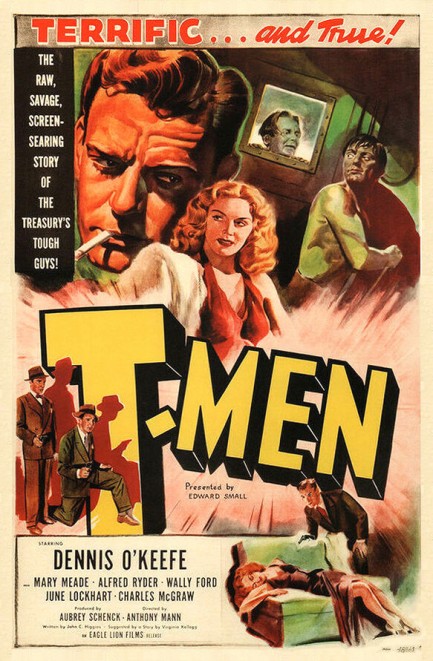
As you know by now, film noir derived from several sources, one of them being the hard-boiled pulp fiction of the 1930s and ’40s, such as the aforementioned Kiss Me, Deadly. As the cycle rolled onward, filmmakers routinely mined crime fiction for movies, and it became common for a book to be purchased for adaptation immediately after it was published. It was a heyday for crime authors. T-Men, for which you see a cool poster above and another at bottom, was not adapted from a novel. It came from a story idea by Virginia Kellogg, the unheralded brain behind films such as White Heat and Caged.
T-Men is the narrated tale of two treasury agents who infiltrate the Detroit mafia to stem a wave of counterfeiting. Dennis O'Keefe and Alfred Ryder play the duo of undercovers, looking sharp in their tailored suits, as they climb the mob chain of authority pretending to be in the possession of flawless counterfeiting plates they're willing to sell. The two take numerous risks to get close to the unknown head of the mob, and find themselves in hot water more than once. The question quickly becomes whether they can catch the crooks and stay alive.
You get excellent noir iconography here, courtesy of director Anthony Mann and cinematographer John Alton. In fact, though the movie is good anyway, the main reason to watch it is because it's a clinic in genre visuals, filled with beautiful shots where light and darkness intersect in sharp angles or blend like mist. The movie also makes good use of locations tailor-made for shadowplay—the steam room, the deserted street, the nighttime amusement park, the swank supper club, the gambling den, the photographer's darkroom, the industrial maze. If you didn't know better you'd think the filmmakers chose the locations first, then built a movie around them.
For those reasons, T-Men is a mandatory entry for film noir buffs, however it isn't quite perfect. Though there are many surprises, aspects of it related to survivability are predictable, and the narration nestles right up against pro-government propaganda, particularly toward the end. Generally, we think most vintage films could have done fine without narration, but here it's actually needed, so you'll have to ignore the filmmakers intent to teach the audience a lesson. That shouldn't be too hard—T-Men is an almost perfect noirscape, a place to get lost in darkness and enjoy the ride. It premiered in the U.S. today in 1947.
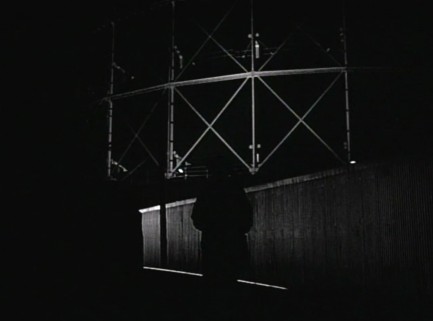
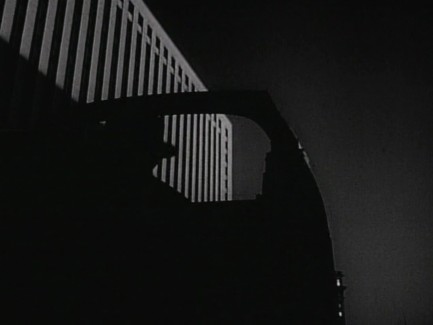
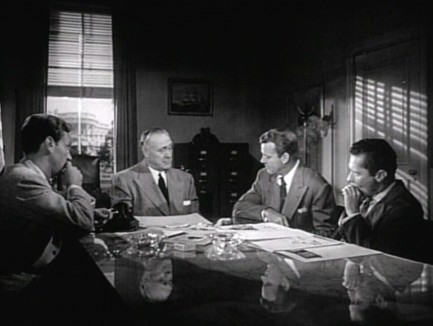
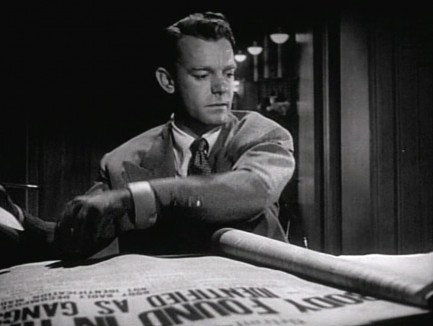
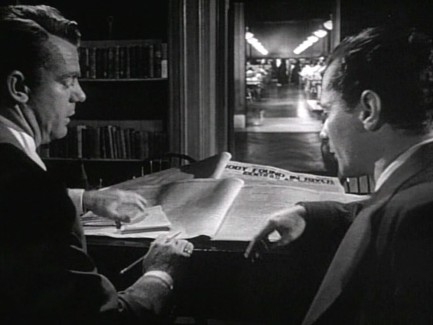
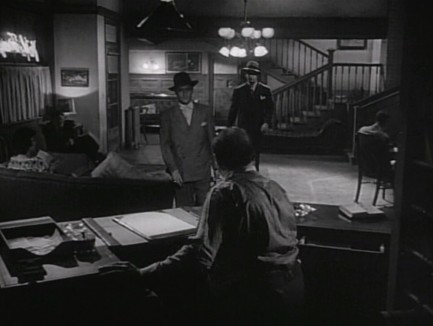
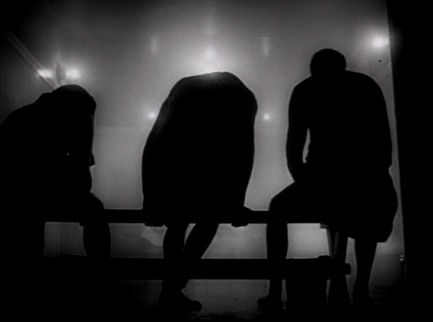
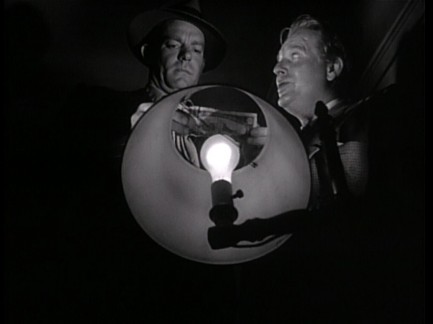
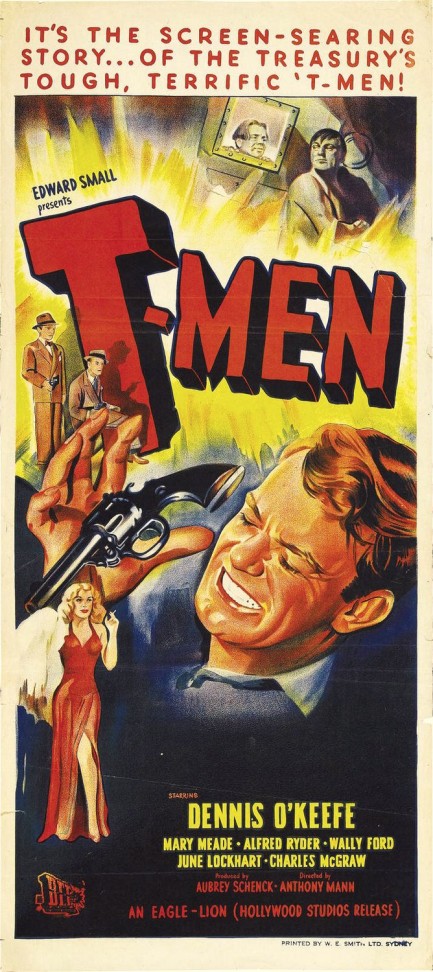
| Femmes Fatales | Oct 28 2020 |

She's probably the first person who wants to get a raw deal online.
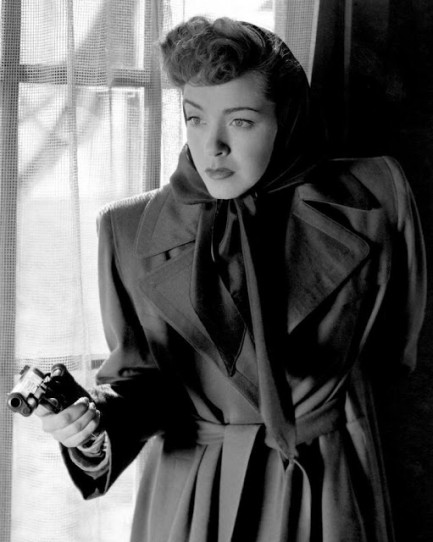
This photo is identified all over the internet as a shot of U.S. actress Marsha Hunt from the 1947 film noir T-Men. The only problem is Hunt didn't appear in T-Men. This is actually her from 1948's Raw Deal, in which she starred with Dennis O'Keefe and Claire Trevor. So take note internet gatekeepers—uncredit this Hunt photo from T-Men and apply it instead to Raw Deal. As a side note, we have copies of both movies, and we'll get around to watching them at some point. When we do we'll report back.
| Hollywoodland | Dec 25 2016 |

The killer that wasn't there.
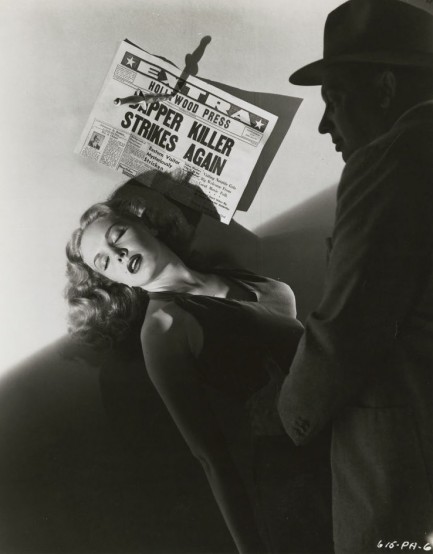
Above is a cool promo shot for the classic film noir T-Men, which premiered yesterday in 1947. That's star Mary Meade posing with an unknown male model under a newspaper affixed to the background via dagger. It's headlined: “Dapper Killer Strikes Again.” But there's no Dapper Killer in the movie. We suspect the image was made for Reliance Pictures as a sort of general Meade promo, but later someone thought it could fit for T-Men. Even without a Dapper Killer the movie is very interesting, though. We'll circle back to it later.




































































